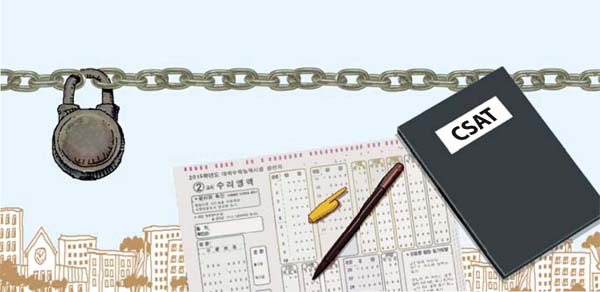Using data to find answers

However, the test data that the ministry submitted to the National Assembly on Wednesday does not include the regions and names of schools, unlike in previous years. It is practically impossible to analyze the data. The ministry claimed that releasing the scores by school may intensify the gap between schools. So media reports had to be based on limited information such as the total number of test takers and only some confirmed names of top-scoring schools.
Not only reporters but also researchers at colleges and research centers cannot conduct in-depth analysis of CSAT scores anymore. But keeping the data secret does not eliminate the gaps among schools and regions. Instead, it takes away the parents’ right to know, and parents may have to resort to the unreliable data that some private businesses provide.
It is hard to agree with the Ministry of Education’s concern that releasing the scores by school would make the rankings fixed. When the scores were made public, the rankings were always changing. Until four or five years ago, foreign-language high schools were ranked in the top places. But lately, their rankings have dropped, and independent private schools are going strong. The “top schools” in each region are changing, so the rankings are not fixed. And parents are not just looking at the existing rankings. They respond more sensitively to changes in college admissions, the job market and curricula at each school.
The CSAT is more than a test for college admission. It is the only test that 600,000 students take at the same time, and it is the best data to diagnose academic performance by region and school. However, the annual CSAT analysis report by the Ministry of Education contains fragmentary information, such as comparing scores between male and female students. There is no data that provides in-depth analysis to diagnose causes and make plans to close score gaps.
Since the 1994 school year, CSAT scores were treated like a Pandora’s box. The gaps between urban and rural and between specialized and general education schools were growing, but the government prevented the data from being released. In 2011, the Supreme Court ruled that the Ministry of Education must release the CSAT scores, as it is more desirable to have productive discussions on educational realities by releasing the scores and ranking schools to encourage competition.
We all know that the gaps between schools are large. Therefore, we need to open the Pandora’s box and treat the festering problems.
The Ministry of Education’s real job is to work with teachers, parents and students to come up with real solutions.
JoongAng Ilbo, May 27, Page 29
*The author is a national news reporter of the JoongAng Ilbo.
NAM YUN-SEO










with the Korea JoongAng Daily
To write comments, please log in to one of the accounts.
Standards Board Policy (0/250자)